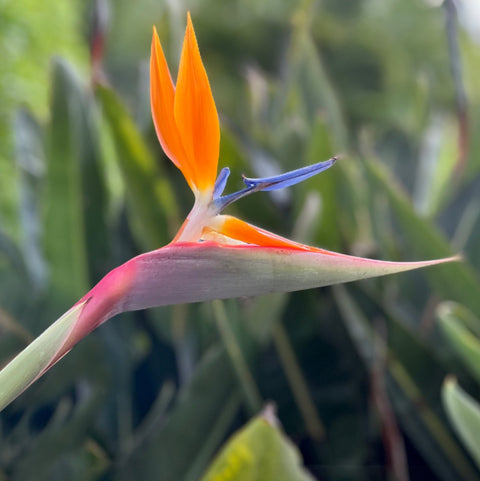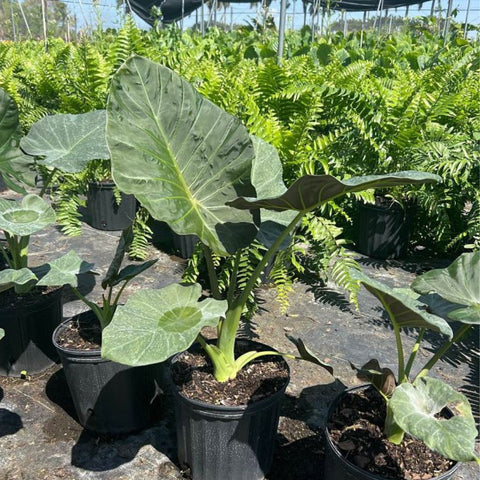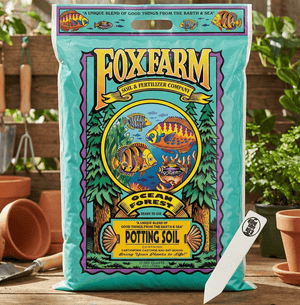Introduction: Awaken Your Garden with Spring Herbs
As the days grow longer and the chill of winter fades, spring emerges as a season of rebirth and rejuvenation. For many gardeners, there's no better way to celebrate the return of warmth and sunlight than by planting a vibrant herb garden. Not only do fresh herbs enhance the beauty and fragrance of your outdoor space, but they also elevate your culinary adventures with their rich flavors and aromas. Imagine harvesting basil leaves for a caprese salad or mint for a refreshing mojito – the possibilities are endless!
This guide will provide you with the insights needed to select, plant, and care for spring herbs like a pro. Whether you're a seasoned gardener or a novice just starting out, these tips will help you transform your garden into a lush herb oasis that supports your lifestyle and inspires your culinary creations.

II. Understanding the Basics of Herb Gardening
A. Importance of Growing Herbs in Spring
Spring is an ideal time for cultivating herbs, as it offers the perfect balance of temperature and rainfall. Most herbs thrive in warm, temperate environments, making early spring the key season for sowing seeds. During this period, the soil is warming up, encouraging faster germination and growth. By starting your herb garden in spring, you can ensure a substantial harvest throughout the summer months.
Growing your own herbs also offers multiple benefits: they're cost-effective, fresher than store-bought options, and can be grown sustainably. Incorporating herbs into your garden enhances biodiversity, attracts beneficial insects, and provides natural pest control. Plus, herbs have numerous health benefits, offering vitamins, minerals, and anti-inflammatory properties.
B. Choosing the Right Location
Your choice of location can significantly impact the success of your herb garden. Most herbs prefer a sunny spot with well-drained soil. Choose a location that receives at least 6-8 hours of sunlight per day. A raised bed or container garden is ideal for controlling the soil quality and drainage. If space is limited, consider vertical or window gardens to maximize your planting area.
C. Soil Preparation and Composition
A healthy soil foundation is crucial for your herbs to thrive. Most herbs prefer soil that is well-draining and rich in organic matter. Begin by loosening the soil to a depth of about 12 inches, removing any rocks or debris. Amend the soil with compost or well-rotted manure to improve its nutrient content and drainage.

Test the soil pH; most herbs like a pH between 6.0 and 7.5. If your soil is too acidic, lime can be added to adjust it. Conversely, sulfur can be used to reduce alkalinity. Regularly refresh the soil in containers, and consider rotating herbs to maintain healthy growth.
III. Essential Spring Herbs for Your Garden
A. Basil (Ocimum basilicum)
Basil is a quintessential herb for the spring garden, known for its aromatic leaves that add a fresh, peppery flavor to dishes. It thrives in warm weather and grows well in pots or garden beds.
1. Planting Tips
Sow basil seeds indoors 6-8 weeks before the last frost date and transplant seedlings outdoors when all danger of frost has passed. Basil prefers full sun and rich, well-drained soil.
2. Harvesting and Uses
Pinch off the top leaves regularly to encourage bushier growth. Use fresh basil in salads, pastas, and pestos. Dry or freeze leaves for winter use.
B. Mint (Mentha spp.)
Mint is a resilient herb that provides a refreshing aroma and flavor. Its vigorous growth habit makes it perfect for container gardening to prevent unwanted spreading.
1. Planting Tips
Mint prefers partial shade and moist, well-drained soil. It can be planted from seed, cuttings, or root divisions in spring.

2. Harvesting and Uses
Harvest mint leaves as needed. They are great in teas, mojitos, desserts, and as garnishes.
C. Rosemary (Rosmarinus officinalis)
Rosemary is a hardy perennial that adds a savory flavor to roasted dishes and sauces. Its needle-like leaves and fragrant aroma make it a gardening favorite.
1. Planting Tips
Start rosemary from cuttings or seedlings, as seeds can be challenging. Plant in full sun and well-drained soil, and protect from harsh winters.
2. Harvesting and Uses
Snip sprigs as needed for cooking. Rosemary is excellent in meat dishes, stews, and even for infusing oils and vinegars.
D. Cilantro (Coriandrum sativum)
Cilantro boasts lacy foliage and a pungent, citrusy flavor that's essential in many cuisines, particularly Mexican, Indian, and Middle Eastern.
1. Planting Tips
Sow seeds directly into the ground or pots in spring. Cilantro prefers full sun but can tolerate light shade and thrives in nutrient-rich, well-drained soil.
2. Harvesting and Uses
Harvest when the leaves are vibrant, cutting off the stems regularly to encourage new growth. Cilantro is ideal for salsa, salads, and curry dishes. Plus, let some plants flower to produce coriander seeds.

IV. Plant Care and Maintenance
A. Watering Guidelines
Proper watering is crucial to the success of your herb garden. Most herbs prefer a consistent watering schedule that keeps the soil moist but not waterlogged. Early morning is the best time to water, allowing plants to absorb moisture before the heat of the day.
B. Fertilization Practices
While herbs don't require heavy feeding, a balanced liquid fertilizer applied every 4-6 weeks during the growing season can support their health. Avoid over-fertilizing, which can lead to lush leafy growth but reduced flavor intensity.
C. Pruning and Harvesting
Regular harvesting will keep your herbs productive and prevent them from becoming leggy. Pinch back the tops of herbs like basil and mint to encourage bushiness, and trim any dead or overgrown stems.
V. Pests and Disease Management
A. Common Herb Garden Pests
Aphids, slugs, and spider mites are common pests in herb gardens. Introduce natural predators such as ladybugs to control aphid populations. Slug traps or copper tape barriers can deter slugs, and regular watering routines will prevent mite infestations.
B. Disease Prevention Tips
Fungal diseases like powdery mildew can affect herbs. Ensure good air circulation by spacing plants appropriately and watering at the base to keep foliage dry. Remove any infected leaves and apply an organic fungicide if necessary.

VI. Sustainable Practices for Herb Gardening
A. Companion Planting
Companion planting involves growing herbs alongside other plants to deter pests and improve growth. For example, basil planted near tomatoes can ward off insects and disease. Incorporate companion planting strategies to promote a healthier garden system.
B. Utilizing Organic Methods
Organic gardening focuses on maintaining soil health and ecological balance. Use organic compost, natural pest deterrents, and avoid chemical fertilizers and pesticides to create a sustainable herb garden.
VII. Harvesting and Preserving Your Herbs
A. Best Harvesting Methods
Harvest herbs in the morning after the dew has evaporated but before the sun is at its peak to capture the highest concentration of oils and flavors. Use sharp scissors or pruning shears for clean, precise cuts.
B. Preservation Techniques
Drying, freezing, and making infused oils or butters are excellent ways to preserve your herb bounty. Dry herbs in a cool, dark, and dry place to maintain their essence. Freeze herbs in ice cube trays with water or oil for easy use in cooking, or make infused oils and butters for enhanced flavoring.

VIII. Conclusion: Celebrate Spring with a Bountiful Herb Garden
With the information and tips provided in this guide, you're well-equipped to start, expand, or refine your spring herb garden. Integrating fresh, aromatic herbs into your garden is not only a pleasure for the senses but a rewarding endeavor that allows you to enjoy the fruits of your labor long after spring has passed.
For high-quality herbs and everything you need to establish a thriving garden, explore our selection at Plantology. Enhance both your indoor and outdoor spaces with lush greens from our diverse range of plants and tools.
Ready to start your journey? Discover the unique varieties we offer and let your garden flourish this spring! Check out our herb collection to bring vibrancy and utility to your gardening space.
IX. Advanced Techniques for Expert Herb Gardeners
A. Hydroponic Herb Gardening
For gardeners looking to delve deeper into innovative gardening methods, hydroponic systems provide a fascinating way to cultivate herbs without soil. These systems use a nutrient-rich water solution to deliver essential minerals while promoting faster growth and higher yields. Hydroponics is particularly beneficial for indoor gardening where space and soil may be limited.
1. Setting Up a Hydroponic System
To begin a hydroponic herb garden, select a space that allows easy access to water and light. Kits for hydroponic systems are available in various sizes and complexities, from simple jars with wicks to advanced systems using pumps and grow lights. Key components include a water reservoir, growing medium such as Rockwool or clay pebbles, and a nutrient solution specific to herbs.

2. Best Herbs for Hydroponics
Consider growing fast-growing herbs like basil, mint, and chives that adapt well to hydroponic environments. Their quick growth and high yield make them ideal candidates for this method, adding a fresh dimension to your home cooking and garnishing.
B. Aquaponics: Combining Aquaculture and Hydroponics
A step beyond hydroponics, aquaponics integrates aquaculture with hydroponic gardening, creating a symbiotic environment that benefits plants and aquatic life. Fish produce waste, which is converted by bacteria into nutrients for the plants, and in turn, the plants help filter the water.
1. Establishing an Aquaponic System
Start by selecting an appropriate fish species, such as tilapia or goldfish, which complement small or large systems. Ensure your plants have sufficient space to grow above the water. Constant water circulation and filtration are crucial in maintaining a balanced ecosystem. Carefully monitor water quality, temperature, and pH to prevent any discomfort to your aquatic friends and ensure healthy plant growth.
2. Advantages of Aquaponics for Herbs
Herbs flourish in an aquaponic system due to the steady nutrient supply. This method conserves water beautifully, as it constantly recycles, and promotes faster plant growth. Herbs like basil, parsley, and watercress thrive particularly well, offering the bonus of fresh produce and a lively home aquascape.
C. Heirloom Herbs: Cultivating Tradition and Flavor
Add historical depth to your garden by incorporating heirloom herb varieties. Heirloom herbs are open-pollinated plants that have been passed down through generations, prized for their unique flavors, fragrances, and medicinal properties.

1. Selecting Heirloom Varieties
Seek out heirloom herbs such as Genovese basil, lemon balm, and Greek oregano, known for their distinctive qualities and robust adaptability. These varieties often boast richer flavors and higher pest resistance compared to modern hybrids, making them a valuable addition to any garden.
2. Tips for Growth and Care
Plant heirloom seeds in well-prepared soil that mimics their native growing conditions. Preserve their genetic purity by limiting nearby planting of similar yet hybridized varieties. Regularly save seeds from your healthiest plants to continue the tradition and ensure consistent growth year after year.
X. Community and Urban Herb Gardening
A. Community Gardening Initiatives
Engaging in community gardening projects is an excellent way to share resources and expand your gardening knowledge in a collective environment. Community gardens often provide space for those without private gardens, fostering collaboration and education.
1. Setting Up a Community Herb Garden
Start by finding a suitable piece of land, either privately owned or a designated community space. Organize a group to discuss design, layout, and responsibilities, ensuring clear communication and cooperation. Consider elevated plots for accessibility, and dedicate sections to various herbs and gardener-specific projects.
2. Benefits of Community Gardening
Participating in a community herb garden offers dual advantages of fresh, locally grown produce and the joy of shared experiences. It creates opportunities for learning and mentorship opportunities, especially for new gardeners seeking expertise from seasoned ones. Additionally, community gardens also promote environmental stewardship and biodiversity awareness.

B. Urban Herb Gardens
Urban gardening brings greenery into dense cities, transforming unused spaces into productive and aesthetically pleasing areas. Rooftops, balconies, and small yards can be creatively adapted for thriving herb gardens, contributing to urban sustainability.
1. Innovations in Urban Gardening
Maximize limited space by utilizing vertical gardens, grow bags, and specialized planters. Incorporate self-watering and smart garden systems to ease maintenance, cater to busy schedules, and adapt to varying microclimates and conditions unique to urban settings.
2. Herb Grown in Urban Settings
Choose herbs that grow well in containers and can thrive in variable sun exposure, such as sage, thyme, and chives. Opt for culinary staples you frequently use, and experiment with more obscure varieties to enhance your garden's diversity and resilience.
XI. Culinary Delights: Exploring Herb-Based Recipes
A. Simple Recipes to Enhance Flavor
Herbs can transform ordinary dishes into extraordinary culinary experiences. From classic recipes to innovative fusion dishes, fresh herbs elevate food with natural flavors and health benefits.
1. Herb-Infused Oils and Vinegars
Create personalized herb-infused oils and vinegars to add depth to salads and marinades. Fill a sterilized jar with top-quality olive oil or vinegar, add herbs like rosemary, thyme, or dill, and allow them to steep for 1-2 weeks for the fullest taste.

2. Homemade Herb Butter
Blend softened butter with finely chopped herbs like parsley and chives for a delightful spread perfect for breads, steamed vegetables, or grilling. Wrap in parchment paper and refrigerate, or freeze in small portions for easy future use.
B. Cultural Inspiration: Herbs Across Cuisines
Herbs have played an integral role in global cuisines, offering both flavor and medicinal benefits. Delve into the cuisine of different cultures to appreciate how herbs enhance and define the culinary identity of regions around the world.
1. Italian Basil Pesto
Take a cue from the Italians with a homemade Genovese-style pesto. Blend fresh basil, pine nuts, garlic, and Parmesan cheese with a generous splash of olive oil to create a versatile condiment for pasta, sandwiches, and bruschetta.
2. Middle Eastern Za’atar Mix
Za’atar is a tantalizing blend of herbs such as thyme, oregano, and sumac, mixed with sesame seeds. Use this spice mix to top flatbreads, enhance roasts, or sprinkle on salads for an authentic taste of the Middle East.

XII. Educational Resources and Further Reading
A. Books and Guides
Enhance your herb gardening skills and culinary prowess by exploring various books and guides. Notable titles include "The Complete Herb Garden: A Comprehensive Guide" and "The Art of Cooking with Herbs: The Chef's Handbook."
B. Online Courses and Workshops
Engage in online workshops and courses that delve into the science and artistry of herb gardening. Websites like Plantology offer resources and virtual classes that cater to beginner and advanced gardeners alike.
XIII. Testimonials and Success Stories
A. Transformation Stories
Listen to testimonials from fellow gardeners who've transformed their spaces into productive herb havens. Share your own experiences on forums and social media to inspire others and contribute to the worldwide gardening community.
B. Acknowledging Challenges and Overcoming Them
Every gardener faces obstacles. Learning to navigate challenges like pest invasions or unpredictable weather ensures personal growth and future success. Embrace hardships as opportunities for learning and skill enhancement.
XIV. Celebrate Your Harvest: Upcoming Events and Collaborations
A. Herb Festivals and Local Events
Attending herb festivals or local gardening events is a joyful way to celebrate the fruits of your labor. Network with other herb enthusiasts, learn from experts, and showcase your own creative gardening achievements.
B. Collaborations with Local Chefs and Businesses
Partner with local chefs or artisanal businesses to use your homegrown herbs in unique culinary creations. Participate in community-supported agriculture (CSA) groups to share your bounty with a broader audience.
XV. Conclusion: Cultivate a Life Enriched by Nature
Herb gardening is more than a pastime; it's a vibrant celebration of nature and a path to well-being. From simple backyard gardens to complex urban setups, the joy of cultivating herbs enhances daily life, fosters community bonds, and connects us to the earth.

The insights and strategies outlined in this guide are designed to equip you with the knowledge to grow a thriving herb garden. Whether you're nurturing a single






























Comments (0)
There are no comments for this article. Be the first one to leave a message!